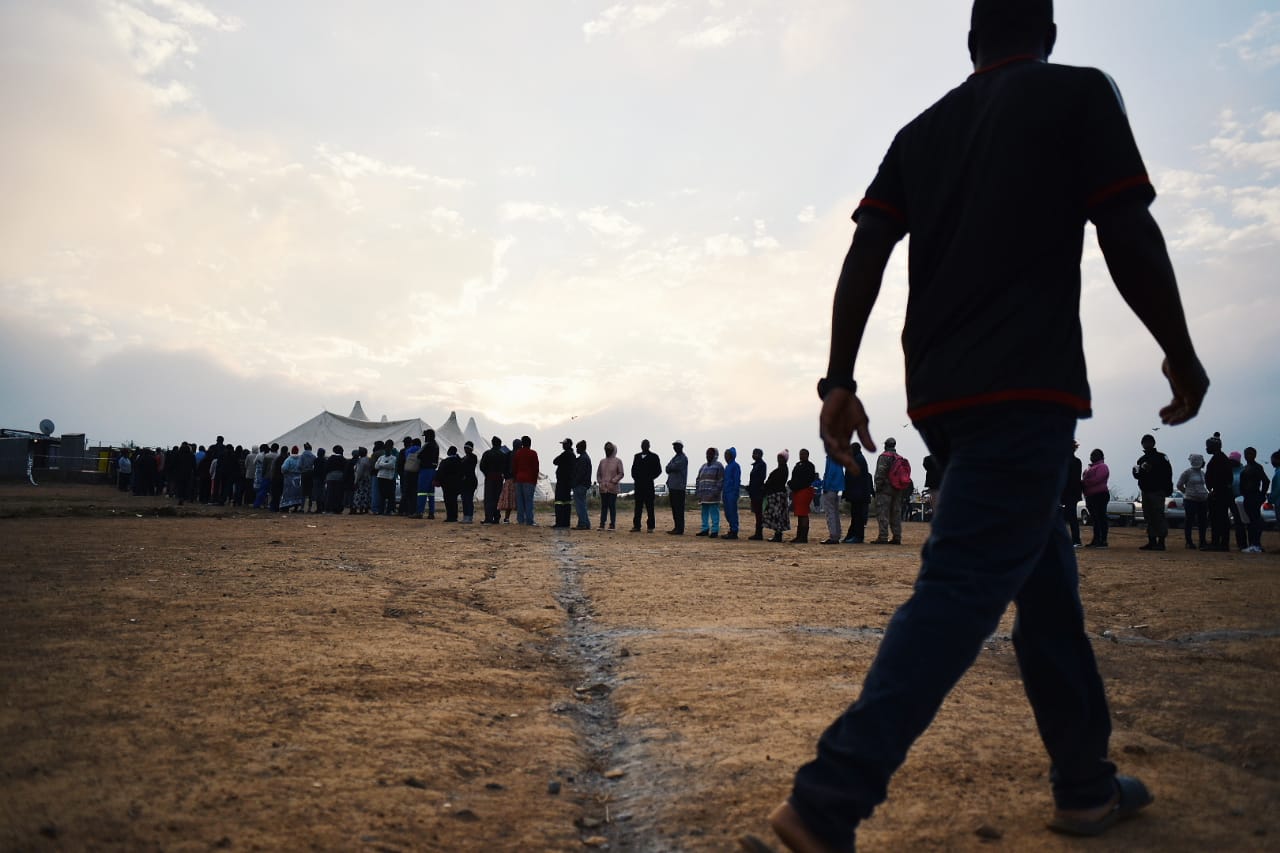There is an enormous number of black South Africans who are alienated from the ANC but have been unable to find a political home.

Voters queue at dawn at a voting station in Saulsville, Pretoria in 2019. Picture: Jacques Nelles.
The May 8 general elections are still being spun by the various parties to best flatter themselves.
The ANC consoles itself that its 57% is “only” five percentage points down. This, Cyril Ramaphosa and his fans sagely agree, suffices to be interpreted as the mandate the beleaguered president needed.
Some in the ANC have also surreptitiously tried to share in the unalloyed success of their renegade offshoot, the EFF, which almost doubled its share to 11%. As they point out, if the two parties vote together – or merge – they would command the kind of constitution-changing majorities that the ANC had in the heyday of former president Thabo Mbeki.
Over 25 years and six general elections, the ANC has proven the remarkable solidity of its vote. Compare this with neighbouring Zimbabwe, where Zanu-PF would have been annihilated by the Movement for Democratic Change (MDC) after only 20 years, were it not for political skulduggery.
The MDC’s growth was ignited by Zim’s spectacular economic collapse, triggered by land expropriation without compensation. In SA, despite fragile economic circumstances and looming land expropriation, the DA has not, yet, benefited from a mass rejection of the governing party.
The DA’s response of losing a few hundred thousand votes to the Freedom Front Plus (FF+) has been foolishly petulant. It basically said, “good riddance to bad rubbish”.
It’s childish behaviour. All that matters is that whatever the origin or motivation of these supporters, the party retains its values.
The DA should know this. After all, it managed to retain its core liberal identity despite an influx of former National Party, white, mostly Afrikaner, voters. In 1994, its predecessor drew only 338 00 votes. In 1999, with the collapse of the Nats, that rocketed to over 1.5 million.
In 2004, when the New National Party joined it, support rose to just under two million. There was no evidence that these new supporters – who now outnumbered the old guard liberals by six to one – diluted the party’s core principles.
On the contrary, it is the perception of this very same group, many of whom are now FF+ voters, that it is, in fact, the party’s leadership that adulterated DA principles. It did so by trying, but failing, to attract black voters from the ANC by offering them a race-based, adulterated liberalism.
The DA is on the horns of a demographic dilemma: most of its support is from racial minorities but, to challenge for power, it needs to attract substantial numbers of black votes.
As long as voting in SA continues to shadow race, the DA will always be on a hiding to nothing. In 1994, SA’s population was 38.6 million, of which the minorities that tend to support it comprised just under 24%. Last year, the population hit 57.7 million, of which the ANC-leaning black portion had increased to 81%.
It’s not all gloom. There is an enormous number of black South Africans who are alienated from the ANC but have been unable to find a political home.
No doubt the DA will do a lot of navel-gazing as to why it is not drawing these floating voters. A pessimist might conclude that it probably doesn’t matter what the party does.
For things to change, it might take the same kind of cataclysmic wake-up call that roused MDC supporters. But as long as the ANC can dodge SA slamming into the economic buffers, the party will likely retain a comfortable majority long into the future.
William Saunderson-Meyer.
For more news your way, download The Citizen’s app for iOS and Android.
Download our app